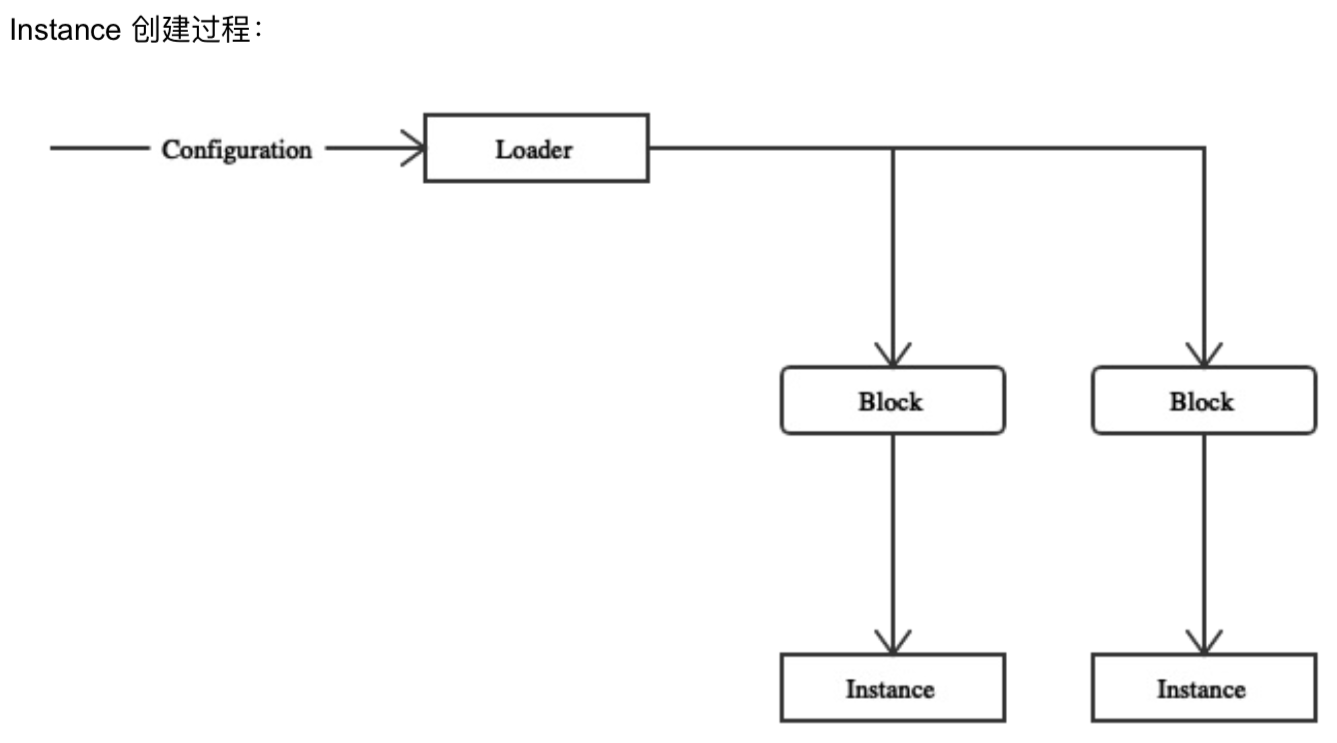- Preview
- Server
- ">
- ServerType
- Directives
- Instance
- struct">struct
serverType代表这个实例的服务器类型,通常是 HTTPcaddyfileInput是Input类型,通常我们配置 caddy 服务器的时候,就是通过编辑 caddyfileInput 的文本实现的修改配置行动。值得注意的是,生成Instance的参数同样是 caddyfile,这里的 caddyfile 在程序中是一个接口,一会儿继续讲解wg是用来等待所有servers执行他们操作的信号量。context是实例Instance的上下文,其中包含serverType信息和服务器配置管理状态的信息。servers是一组server和 他们的listeners,两种 Server TCP/UDP,即serverType,两种不同的serverType会对应不同的caddyfile中的选项。OnXXX等 6 个函数是一系列回调函数,通过名字能够看出在什么时候回调触发。- 12-factor 中的 第九条 Disposability 相符合。意思是每一次重载实例 Instance 即使是在进程中重载,也不会出现数据相互影响到情况,保持幂等。">
Storage是存储数据的地方,本来可以设计在 全局状态中,但是设计在这里更好,考虑到垃圾回收机制,进程中重新加载时,旧的 Instance be destroyed 之后,会变成垃圾,收集。这和 12-factor 中的 第九条 Disposability 相符合。意思是每一次重载实例 Instance 即使是在进程中重载,也不会出现数据相互影响到情况,保持幂等。
- struct">struct
- Context
Preview
我们已经了解了 Caddy 的整个建立流程,这一次我们来了解关于 Caddy 服务的执行者, Instance 和 Server。
Caddy 中 Server 的定义是接口,只要 满足 Server 的接口的行为,你可以任意扩展你自己的 Caddy 程序。
而 Instance 是执行服务的实例。
Server
在 caddy.go 中定义着 Server 的接口,同时实现了优雅的退出。我们首先看图了解组织结构
简单看一下 Stopper 的接口
// Stopper is a type that can stop serving. The stop// does not necessarily have to be graceful.type Stopper interface {// Stop stops the server. It blocks until the// server is completely stopped.Stop() error}
GracefulServer 包含 Stopper 的接口实现了优雅退出,这是拦截了 系统 signal 的信号之后执行的结果,意在意外中断的时候保存好需要保存的东西。
它同时包含着 WrapListener 函数。可以看出,他用来做中间件。
// WrapListener wraps a listener with the// listener middlewares configured for this// server, if any.WrapListener(net.Listener) net.Listener
ServerType
上文看到,caddyfile 的 Loader 是针对 不同的 serverType 的,例如 HTTP。
当没有 caddyfile 可以 Load 的时候,对于一个 ServerType 也有一个默认的方法 DefaultInput进行调用,让你的程序更健壮。
// ServerType contains information about a server type.type ServerType struct {// Function that returns the list of directives, in// execution order, that are valid for this server// type. Directives should be one word if possible// and lower-cased.Directives func() []string// DefaultInput returns a default config input if none// is otherwise loaded. This is optional, but highly// recommended, otherwise a blank Caddyfile will be// used.DefaultInput func() Input// The function that produces a new server type context.// This will be called when a new Caddyfile is being// loaded, parsed, and executed independently of any// startup phases before this one. It's a way to keep// each set of server instances separate and to reduce// the amount of global state you need.NewContext func(inst *Instance) Context}
保存
有一个全局变量维护有的 ServerType
// serverTypes is a map of registered server types.serverTypes = make(map[string]ServerType)
usage
使用 RegisterServerType 注册
// RegisterServerType registers a server type srv by its// name, typeName.func RegisterServerType(typeName string, srv ServerType) {if _, ok := serverTypes[typeName]; ok {panic("server type already registered")}serverTypes[typeName] = srv}
Directives
前文提过该概念,这是在 caddy 中的概念,和 token 对应,
Loader 和 Parser 会通过 caddyfile 生产 token ,
通过读取 token 对应相应的 plugin 的 directive ,用来配置 plugin 。
值得注意的是,他是交给 controller 来配置的,可在上一篇文章详细了解
controller 会调用 plugin 结构中的 Action 字段,
Action 是一个 SetupFunc 类型
// SetupFunc is used to set up a plugin, or in other words,// execute a directive. It will be called once per key for// each server block it appears in.type SetupFunc func(c *Controller) error
在 Plugin.go 中有 DirectiveAction 来通过 directive 调用 action
// DirectiveAction gets the action for directive dir of// server type serverType.func DirectiveAction(serverType, dir string) (SetupFunc, error) {if stypePlugins, ok := plugins[serverType]; ok {if plugin, ok := stypePlugins[dir]; ok {return plugin.Action, nil}}if genericPlugins, ok := plugins[""]; ok {if plugin, ok := genericPlugins[dir]; ok {return plugin.Action, nil}}return nil, fmt.Errorf("no action found for directive '%s' with server type '%s' (missing a plugin?)",dir, serverType)}
最后看到不同 serverType 生成不同的 server
另外可以看到 这里最重要的 Instance 下面我们进一步查看 Instance 的代码
Instance
instance 是 Server 用来执行操作的实体。首先来看他的结构。它的代码在 主文件夹中的 caddy.go 中
struct
type Instance struct {serverType stringcaddyfileInput Inputwg *sync.WaitGroupcontext Contextservers []ServerListenerOnFirstStartup []func() error // starting, not as part of a restartOnStartup []func() error // starting, even as part of a restartOnRestart []func() error // before restart commencesOnRestartFailed []func() error // if restart failedOnShutdown []func() error // stopping, even as part of a restartOnFinalShutdown []func() error // stopping, not as part of a restartStorage map[interface{}]interface{}StorageMu sync.RWMutex}
serverType 代表这个实例的服务器类型,通常是 HTTP
caddyfileInput 是 Input 类型,通常我们配置 caddy 服务器的时候,就是通过编辑 caddyfileInput 的文本实现的修改配置行动。值得注意的是,生成 Instance 的参数同样是 caddyfile,这里的 caddyfile 在程序中是一个接口,一会儿继续讲解
wg 是用来等待所有 servers 执行他们操作的信号量。
context 是实例 Instance的上下文,其中包含 serverType 信息和服务器配置管理状态的信息。
servers 是一组 server 和 他们的 listeners,两种 Server TCP/UDP,即 serverType ,两种不同的 serverType 会对应不同的 caddyfile中的选项。
OnXXX 等 6 个函数是一系列回调函数,通过名字能够看出在什么时候回调触发。
Storage 是存储数据的地方,本来可以设计在 全局状态中,但是设计在这里更好,考虑到垃圾回收机制,进程中重新加载时,旧的 Instance be destroyed 之后,会变成垃圾,收集。这和 12-factor 中的 第九条 Disposability 相符合。意思是每一次重载实例 Instance 即使是在进程中重载,也不会出现数据相互影响到情况,保持幂等。

虽然 Instance 操作着众多操作,但是我们却不是从它讲起,我们已经了解了 Instance 的整个建立,渐渐了解 Instance 能调用的函数,自然 Instance 的功能就清晰了。
上面的 Instance 结构非常简单,各个字段的功能也很明晰,下面我们看涉及到 建立服务器的 Context 字段和结构
Context
Context 看源码可以知道,他是用来创建 Server 的。
// Context is a type which carries a server type through// the load and setup phase; it maintains the state// between loading the Caddyfile, then executing its// directives, then making the servers for Caddy to// manage. Typically, such state involves configuration// structs, etc.type Context interface {// Called after the Caddyfile is parsed into server// blocks but before the directives are executed,// this method gives you an opportunity to inspect// the server blocks and prepare for the execution// of directives. Return the server blocks (which// you may modify, if desired) and an error, if any.// The first argument is the name or path to the// configuration file (Caddyfile).//// This function can be a no-op and simply return its// input if there is nothing to do here.InspectServerBlocks(string, []caddyfile.ServerBlock) ([]caddyfile.ServerBlock, error)// This is what Caddy calls to make server instances.// By this time, all directives have been executed and,// presumably, the context has enough state to produce// server instances for Caddy to start.MakeServers() ([]Server, error)}
他在 Caddy.go 中 被 startWithListenerFds(cdyfile Input, inst *Instance, restartFds map[string]restartTriple) error 调用
用来创建服务器们
slist, err := inst.context.MakeServers()


